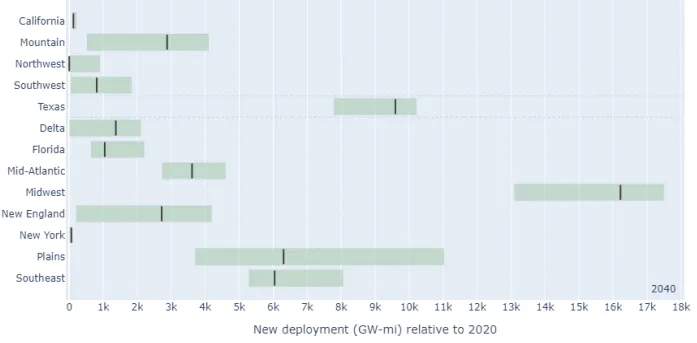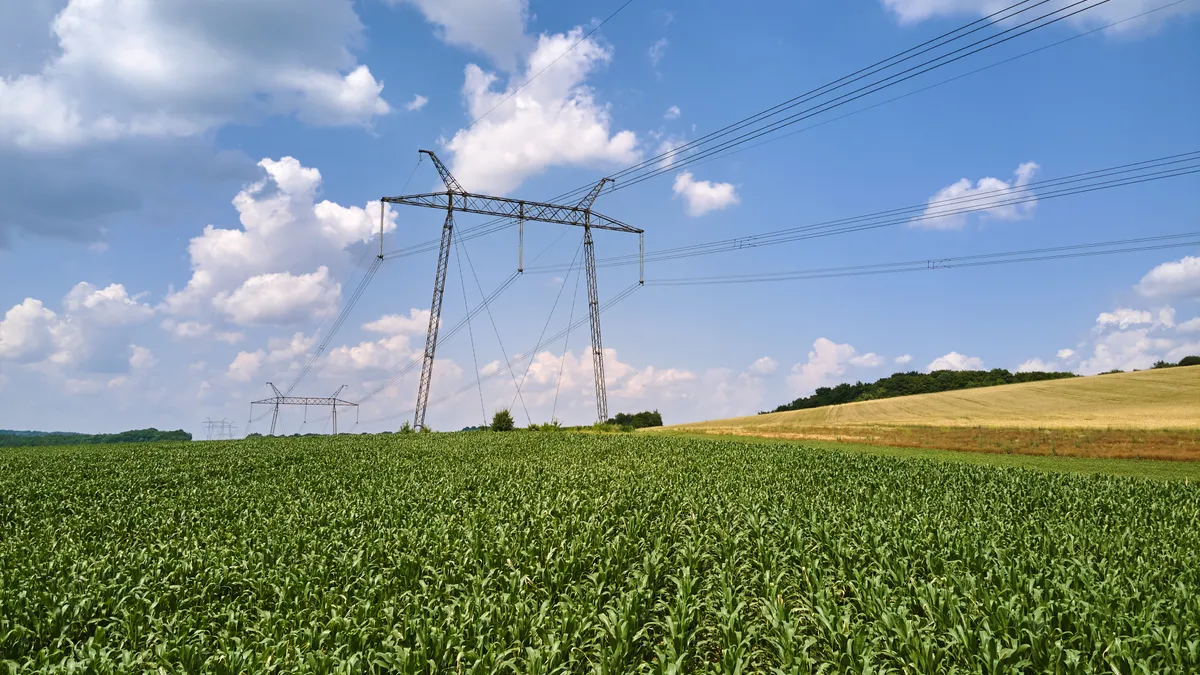The United States will likely need 47,300 GW-miles of new transmission by 2035, a 57% increase compared to today’s transmission system under a moderate load growth-high clean energy growth scenario, according to a Department of Energy draft report.
The draft report found the transmission needs in the U.S. are “pressing,” that inter-regional transmission offers the biggest benefits, and that the needs will shift over time, Adria Brooks, a transmission planning engineer in the Department of Energy’s Grid Deployment Office, said Friday during a webinar on the draft report.
“Significant transmission deployment is needed as soon as 2030 in the Plains, Midwest and Texas regions, but by 2040, large deployments will also be needed in the Mountain and Mid-Atlantic and Southeast,” Brooks said.

The benefits of increased transmission capacity include: improved grid reliability, resilience and resource adequacy; enhanced renewable resource integration and access to clean energy; decreased energy burdens; support for electrification efforts; and reduced congestion and curtailment, the department said.
The DOE will use the findings in the National Transmission Needs Study to help select national transmission corridors and review proposed transmission projects that may be eligible for funding through the Infrastructure Investment and Jobs Act and the Inflation Reduction Act, Brooks said.
The triennial report is based on existing studies and data, but for the first time considers future transmission needs that were determined under several scenarios using capacity expansion modeling.
Under the moderate load growth-high clean energy scenario, which Brooks said was the “new normal” after the passage of the bipartisan infrastructure law and the IRA, total median inter-regional transfer capacities across the United States increases to more than 120 GW in 2035.
“Large amounts of low-cost generation potential exist in the middle of the country and accessing this generation through increased transmission is cost effective for neighboring regions,” DOE said.
Increased transmission capacity between regions could help lower electricity costs for some areas, according to the report.
Based on differences in market prices, the most value is found by connecting the Electricity Reliability Council of Texas to the Southwest region of the Western Interconnection, followed by connecting ERCOT with the Eastern Interconnection, DOE said.
There is also “significant value” in connecting the Southwest Power Pool with the Mountain region of the Western Interconnection and with the Midcontinent Independent System Operator to the east, the department said.
Comments on the draft report are due April 20, according to a Monday Federal Register notice. DOE aims to issue a final report this summer, according to Brooks.
The report could affect DOE’s pending National Transmission Planning Study, which aims to identify transmission solutions that provide broad-scale benefits. It could also be used for regional and inter-regional transmission planning, according to the department.















